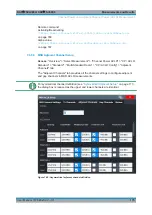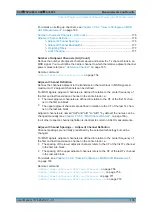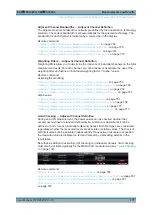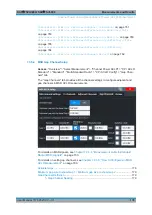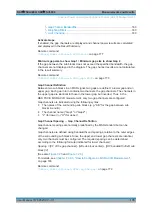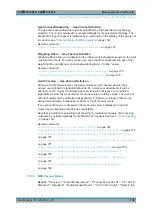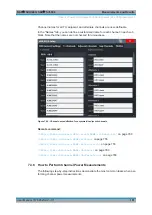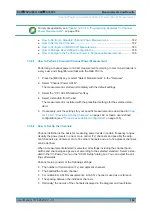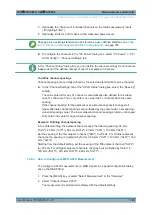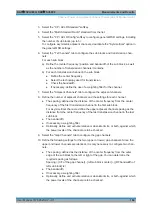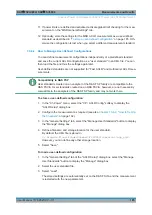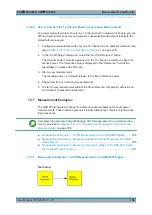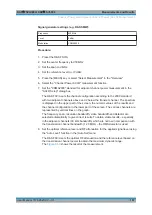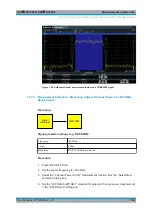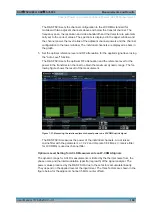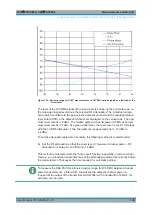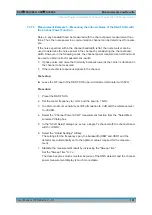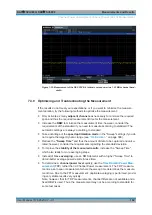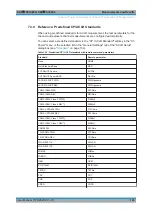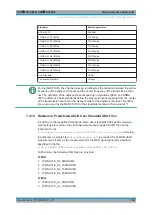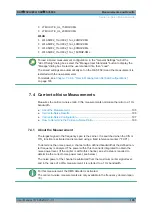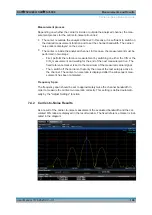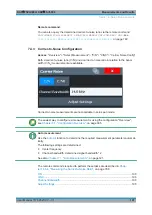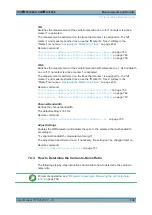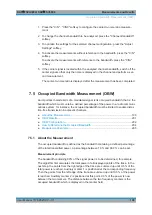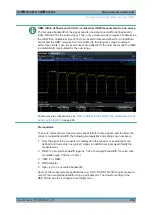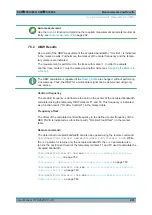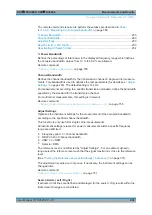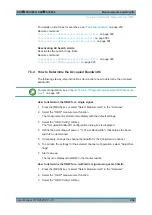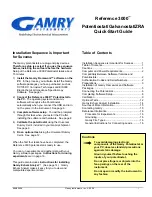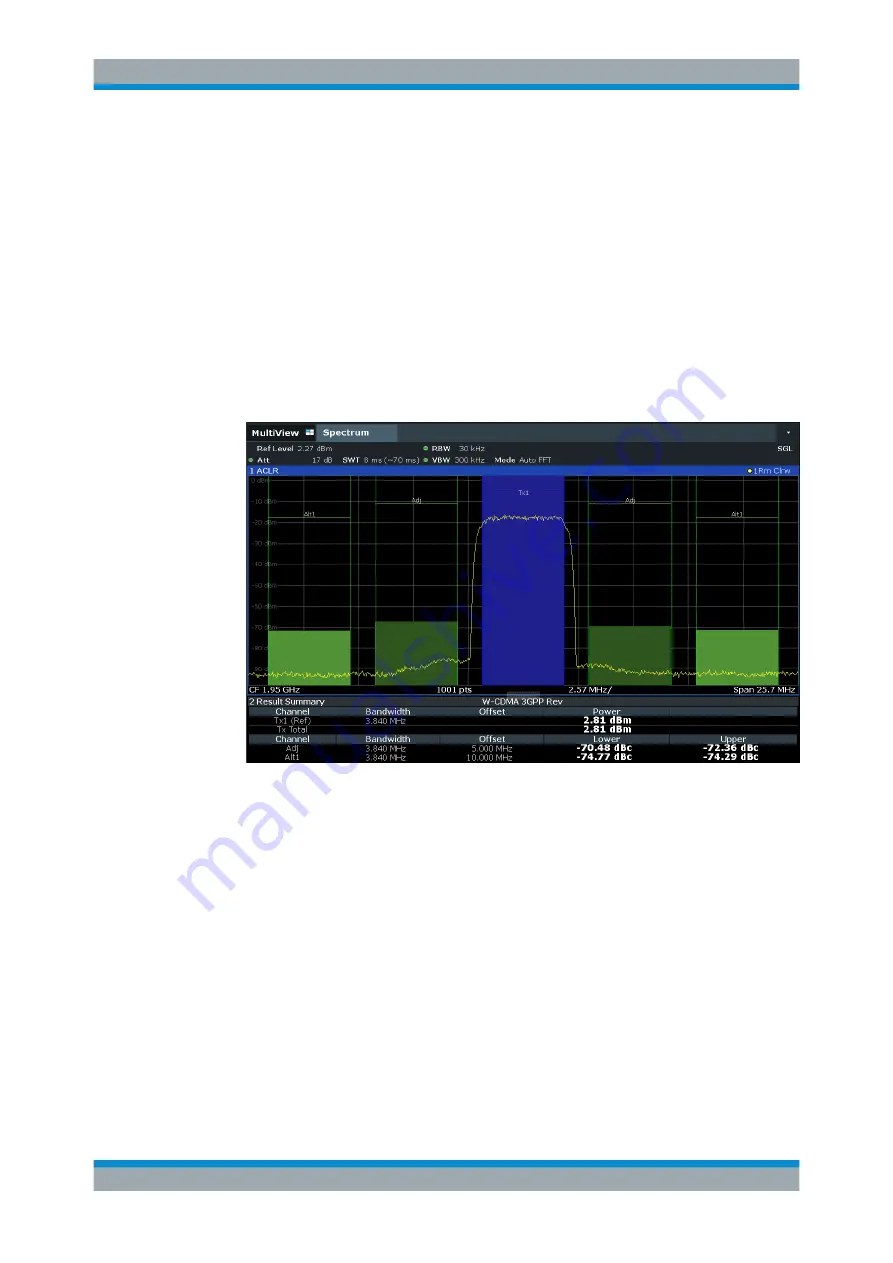
Measurements and Results
R&S
®
FSVA3000/ R&S
®
FSV3000
189
User Manual 1178.8520.02 ─ 01
The R&S
FSV/A sets the channel configuration to the W-CDMA standard for
mobiles with two adjacent channels above and below the transmit channel. The
frequency span, the resolution and video bandwidth and the detector are automati-
cally set to the correct values. The spectrum is displayed in the upper window and
the channel power, the level ratios of the adjacent channel powers and the channel
configuration in the lower window. The individual channels are displayed as bars in
the graph.
5. Set the optimal reference level and RF attenuation for the applied signal level using
the "Auto Level" function.
The R&S
FSV/A sets the optimum RF attenuation and the reference level for the
power in the transmission channel to obtain the maximum dynamic range. The fol-
lowing figure shows the result of the measurement.
Figure 7-31: Measuring the relative adjacent channel power on a W-CDMA uplink signal
The R&S
FSV/A measures the power of the individual channels. A root raised
cosine filter with the parameters
α
=
0.22 and chip rate 3.84
Mcps (=
receive filter
for W-CDMA) is used as channel filter.
Optimum Level Setting for ACLR Measurements on W-CDMA Signals
The dynamic range for ACLR measurements is limited by the thermal noise floor, the
phase noise and the intermodulation (spectral regrowth) of the signal analyzer. The
power values produced by the R&S
FSV/A due to these factors accumulate linearly.
They depend on the applied level at the input mixer. The three factors are shown in the
figure below for the adjacent channel (5
MHz carrier offset).
Channel Power and Adjacent-Channel Power (ACLR) Measurement

